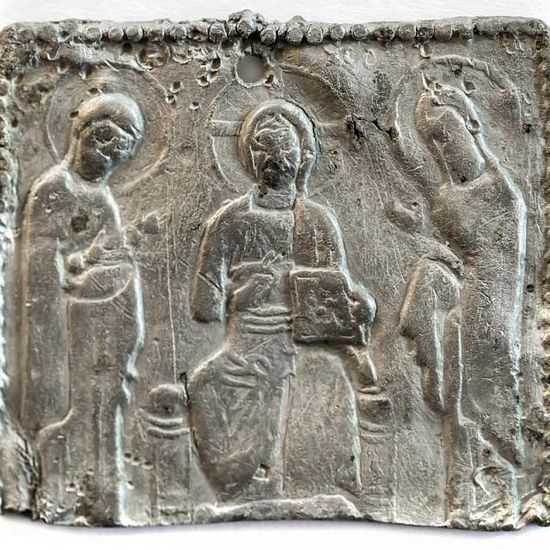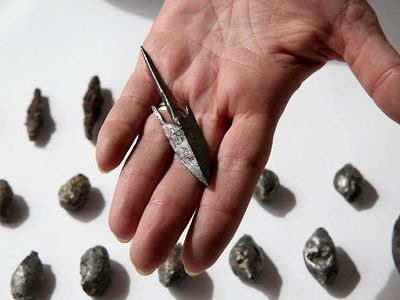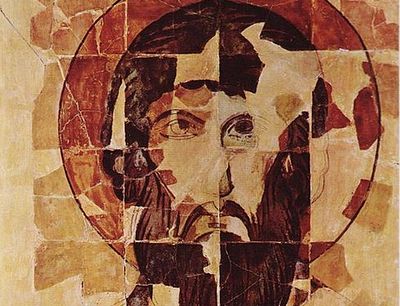Source: Archaeology in Bulgaria
January 22, 2016
 This 14th century Bulgarian silver icon showing Jesus Christ, the Virgin Mary, and St. John the Baptist has made its way to the collection of the National Museum of History in Sofia. Photo: National Museum of History in Sofia
This 14th century Bulgarian silver icon showing Jesus Christ, the Virgin Mary, and St. John the Baptist has made its way to the collection of the National Museum of History in Sofia. Photo: National Museum of History in Sofia
A 14th century silver icon of Jesus Christ from the time of the Second Bulgarian Empire (1185-1396) has been donated to Bulgaria’s National Museum of History in Sofia by the Bulgarian police.
The icon is a rectangular silver slab which is 6 cm long and 5 cm wide, the Museum press service has announced.
It features an image of Christ Pantocrator (Pantokrator, i.e. Almighty) sitting on a throne, with images of the Holy Mother of God (Virgin Mary) and St. John the Baptist on his sides.
“The figures were wonderfully drawn by an experienced engraver, and are fully preserved. This was probably an icon worn on the bosom by a senior aristocrat from the Second Bulgarian Empire," Bozhidar Dimitrov, Director of the National Museum of History in Sofia, is quoted as saying.
More specifically, the silver icon is dated back to the first half of the 14th century. It has been hypothesized that it was made in the then Bulgarian capital Tarnovgrad, today’s Veliko Tarnovo.
It probably dates back to the reign of Tsar Todor (Teodor) Svetoslav Terter (r. 1300-1321), or his son, Tsar Georgi II Terter (r. 1331-1323).
“It is known that the next Bulgarian Tsar, Tsar Mihail III Shishman (r. 1323-1330) wore on his breast a cross made of regular iron, and often swore, and everyone believed, that it was a miracle cross," Dimitrov says.
In its statement, the Museum reveals that themedieval silver icon was donated for its collection by Inspector Angel Papalezov from the Unit for Fighting Crimes against Cultural Heritage Properties of Bulgaria’s National Police.
However, it does not provide any detail as to how the police officer came in possession of the medieval icon, and/or if it was seized fromtreasure hunters or antique traffickers.
Background Infonotes:
Treasure hunting and illegal trafficking of antiques have been rampant in Bulgaria after the collapse of the communism regime in 1989 (and allegedly before that). Estimates vary but some consider this the second most profitable activity for the Bulgarian mafia after drug trafficking. One recent estimate suggests its annual turnover amounts to BGN 500 million (app. EUR 260 million), and estimates of the number of those involved range from about 5 000 to 200 000 – 300 000, the vast majority of whom are impoverished low-level diggers.



